Why is my dog out of control?
When someone tells me “Help! My dog is out of control!” he’s usually concerned about a specific issue – aggression around other dogs, possessiveness or nonstop energy!
These are problems that should be addressed, but usually the owner fails to look at the big picture. If a dog is having “problems,” it’s often related to a lack of exercise (physical, mental and emotional) as well as a failure on the owner’s part to prevent situations that cause the problem.
Here are some examples:
1. Physical exercise for all energy levels
I see so many dogs “wound up” with energy, and I’m sure you do too. I wish every dog could go for at least an hour walk every single day. That would erase so many “behavioral” problems.
See my post: Why I favor exercise over training.
‘Lazy’ dogs need exercise, too
Even lower energy dogs will have behavioral problems due to pent-up energy.
How many people say things like “He’s so good in the house, but outside he’s just crazy!” Or, “He’s so good until someone comes to the door, then he’s uncontrollable!”
These types of problems can be related to a lack of exercise.
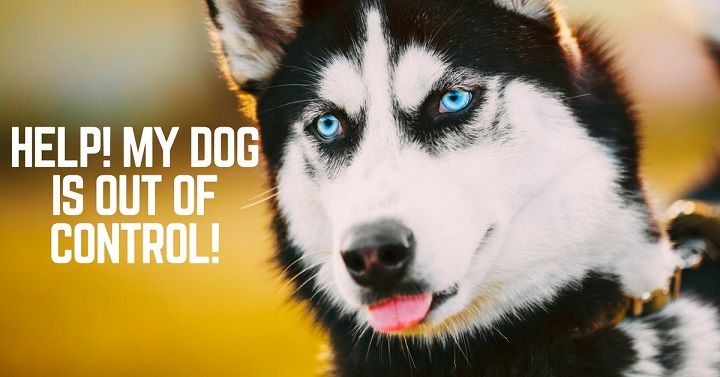
My senior mutt Ace was physically lazy. He could sleep for at least 20 hours out of every 24 if I let him.
However, he could also go from a very calm state of mind to a very excited state in about one second. Because of this, I knew it was still important to provide my dog with a daily walk.
If he did not get several walks per week, then all that hidden energy would appear at the wrong time such as when we drove to a park and he started whining and howling.
Even though my dog did not appear to be high energy, he would still have an easier time remaining calm during “exciting” situations if I consistently exercised him.
With my younger dog Remy, this is even more important!
How much exercise?
Most people will say they do walk their dogs. But if you ask how far, they will say things like “oh, about a mile” or “I take him out for four potty breaks around the block.”
And then of course some of us just admit we don’t walk our dogs enough.
But dogs are made to move! They adapt to our lifestyles, but dogs really need to walk and run!
If you think about each breed, pretty much every single one was bred for something active – herding, pulling, retrieving, tracking, chasing pests, hunting, guarding, flushing, etc.
A one-mile daily walk is just not going to cut it for most dogs, not if your goal is to eliminate “behavioral” issues.
What about small dogs?
Most small dogs are all able to walk more than a mile per day, even toy breeds like Chihuahuas and mini dachshunds.
I fostered a Pomeranian cross that ran 2 miles along my bike several days per week. Small dogs need lots of exercise, too. Sometimes even more than the bigger guys!

How to exercise a dog
Try running with your dog, biking, rollerblading or buying him a dog backpack to wear on walks.
Visiting the dog park is also a good way to drain a dog’s physical energy, but please take him for a walk first. You could also hire a dog walker.
2. Mental exercise – working for food
If your dog is anxious all the time – appearing stressed, bored or obsessive – give him something to do with his mind!
You’d be amazed by how many “problems” would simply vanish if people gave their dogs more mental challenges.
Using food to create a job for your dog
One of the worst things you can do for most dogs is to leave food out all the time or “free feed.”
Instead, use food as a reward for the good work your dog does throughout the day. By teaching your dog to work for his food, you are teaching him to focus on you and to practice self control.
He will get the satisfaction of solving a problem and learning to feel calm.
You could break your dog’s meals into small portions and reward him after short training sessions where you practice commands – sit, down, stay, come, heel, shake, speak.
Another way to help your dog work for his food is to give him pieces of food whenever he shows good behavior on a walk.
When he walks at your side or on a loose leash, give him food. When he looks at you instead of another dog, reward him with food. Add a command to this exercise – “watch!” – so you can eventually get your dog to make eye contact in any situation.
A treat pouch is very helpful for holding training treats!
You should always have food handy whenever you are around your dog’s “problem areas,” whether it’s when he’s tied in the yard, when you ride in the car or visit the vet, etc.
Reward your dog whenever you see him displaying good behavior. Problems like lunging after other dogs, chasing squirrels or barking at cars will decrease.
Food-dispensing toys
Food-dispensing toys like Kongs or puzzle toys work really well for giving dogs an extra job. When a dog is fed this way instead of from a bowl, the dog must work to get the food.
Not only does this give the dog something to do if he’s home alone, but it helps him use his mind and body to solve a problem. This helps drain the dog of pent-up mental energy and rewards him for his hard work.
Even if your dog will not work on puzzle toys once he’s already anxious, you should still use these types of toys when he’s calm. This will drain some of his pent-up mental energy, leaving him calmer when more stressful situations occur.
I like the Nina Ottosson puzzle toys (below) but there are lots of options.
Ideally, you should put all your dogs meals in these types of toys instead of in bowls. It does take extra time, though, so try starting with one meal per week. There’s a great post on this here.
What if your dog isn’t interested in food?
Whenever I write about making a dog work for his food, someone always says “But my dog won’t accept treats on walks” or “My dog is not interested in Kongs.”
That’s because he’s not hungry. He’s used to receiving a free bowl of food every morning. Stop feeding him from a bowl or at least decrease the amount. That way he’ll be hungry and ready to work for food.
Most dogs in American could stand to lose several pounds. Let’s remember that dogs are animals and they will eat if they are hungry. As long as they are healthy, they will not starve themselves.
If your dog still seems uninterested in working for his food even after he’s missed a few meals, try mixing the food with pieces of real meat, cheese, jerky treats, canned food or whatever else your dog likes.
Just make sure if you increase these foods, you decrease the kibble. You don’t want an obese dog.
Don’t feel sorry for your dog if he’s not interested in working for his food at first. He will eat when he’s ready to work.
Remember how bored, anxious, frustrated or obsessive he is? That’s because he needs a job! Be patient, and keep looking for ways to challenge and reward your dog with food.
Other mental challenges
Try visiting a new place several times per week, walking in new environments, taking an agility or obedience class or having your wear a dog backpack. Sometimes the simplest mental challenge is to expose your dog to new sights, sounds and smells every day.
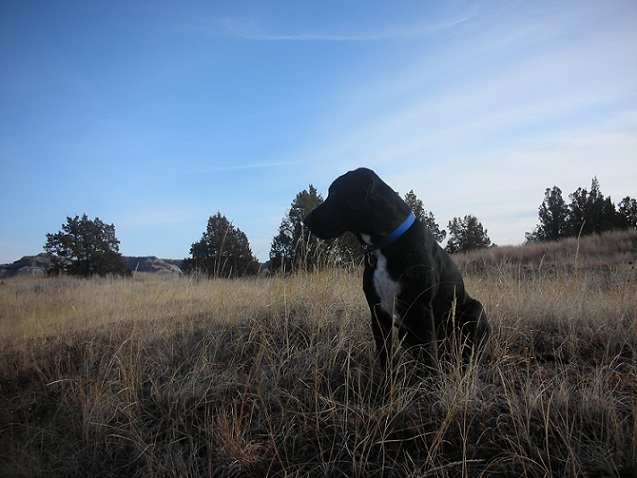
3. Emotional energy and playing tug
I’ve taken into account the emotional energy of dogs ever since I was introduced to “natural dog trainers” Kevin Behan and Neil Sattin, although I am still learning.
An effective way to help rid dogs of deep emotional energy (such as stress or frustration) is to play tug of war. Ace had a lot of emotional energy, and playing tug really helped him drain that energy. We typically played for about five minutes.
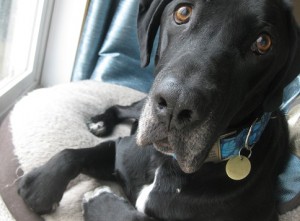
If your dog is reactive on a leash, you could try offering him a rope toy to tug on when you see other dogs. This will give him a constructive way to drain his frustration, while drawing his attention to you and away from the other dog.
4. Prevention!
Dog owners highly underestimate prevention. Prevention could be doing a quick U-turn when you see an approaching dog on a walk to prevent lunging. It could be carrying jerky treats to get your dog’s attention and prevent whining.
It could be not leaving your dog outside unattended in order to prevent barking. It could be leaving him in a kennel when he’s home alone to prevent peeing on the floor or chewing shoes.
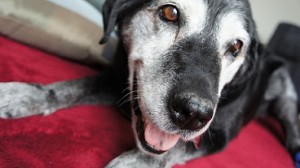
My former foster dog Dora barked when she saw other dogs in the yard, so I prevented this by keeping the curtains closed.
My dog Ace was well behaved 99 percent of the time because I consciously prevented him from failing. I knew how to push his limits just enough so he would be successful.
For example, if two people were playing catch, Ace was not allowed to run back and forth between them, because he would absolutely freak out.
So, to prevent him from barking, I either sat with him and got him to focus on me (by using food), or I put him in the house where he was able to calm down. I knew where my dog needed to be in order to relax, yet remain challenged without failing.
Lying in the yard barking his head off, howling, yipping and flinging foamy drool everywhere would be failing 🙂
Lying quietly on his bed in the living room where he could still see us through the window would be success. Lying quietly out of sight in his kennel with a Kong would also be success. Then we slowly build from there.
Will your dog get better?
If you provide your dog with more than enough exercise and mental challenges while also practicing prevention, I’m guessing your “out of control” dog will suddenly be much easier to manage.
Do you have any examples of how increased exercise or prevention helped your dog?
Let me know in the comments!
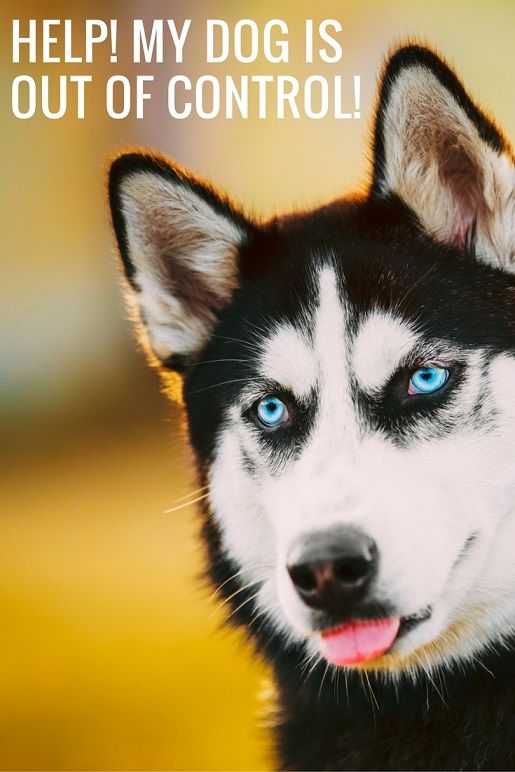

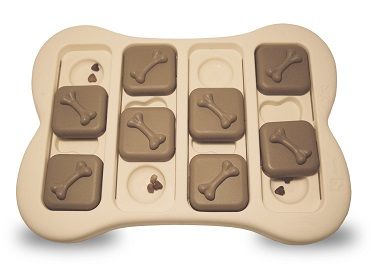
Joyce Bell
Monday 14th of November 2022
Ihave a 15 month old rescued beagle cross I've had her 3 months he barks at nearly everybody and other dogs when we are on a walk,its so bad I dread the walk. Some days are worse than others I dont understand.People have been very kind and stopped and spoke to us and tried to help which does it's so friendly till they walk away he starts to bark again but not always it weird any one help
sharon
Tuesday 7th of February 2017
We have a 3yo black lab & a 5yo GSP mix. We recently moved next door to our 2 yo granddaughter. She comes over every afternoon after day care. Our dogs are really out of control when she is here. The GSP in constantly trying to lick her. She runs, and they run and she goes flying. She has to be carried to enter our house or they will knock her over. I have tried walking them before she arrives, playing fetch with them to tire them out, wearing a treat pouch and "clicking" them for lying at my feet when she is here. That works but requires constant vigilance as they are constantly getting up. (Have been working on "stay" but not very successfully.)I am getting worn out! They are big dogs with long tails that are constantly wagging and whacking her in the head! I think part of my training problem is that there are 2 of them and it is very hard to work with them separately because the other one is going nuts if they are separated. We recently moved from another state and fostered dogs for a rescue group (over 30 in a year)and never had these control problems around our fosters. My granddaughter makes my dogs act crazy! Anybody have any suggestions?
Kim Chappell
Tuesday 19th of March 2019
I'd train PLACE command, I use a dog cot. Dogs are trained to stay on their cots, no barking, whining, or getting off without permission. You could use a tie back at first ( leash tied to a very solid object) to help the dogs. Lots of free videos on You Tube showing how to train this behavior. Once they learn this you can work on duration and distractions. My ACD will lie quietly on his cot with distractions for several hours at his stage of training.
Judy Weikum
Tuesday 27th of September 2016
You have always given us the best advise . It takes time but is worth it!
Lindsay Stordahl
Tuesday 27th of September 2016
That's great to hear!
Melissa
Monday 26th of September 2016
Great, thank you!
Melissa
Monday 26th of September 2016
Do you recommend a puzzle toy for a very strong jawed Golden Retriever? Except for the Kong toys, my goldie has destroyed everything else in her path. She loves to shred everything she can! But she loves puzzles (for the few days they last) and I wish I could find one that can stand up to her strength. Can you help me?
Lindsay Stordahl
Monday 26th of September 2016
Hi Melissa. The "Busy Buddy" from Petsafe is a good one. I've used it with golden retrievers. http://amzn.to/2dbaGsG